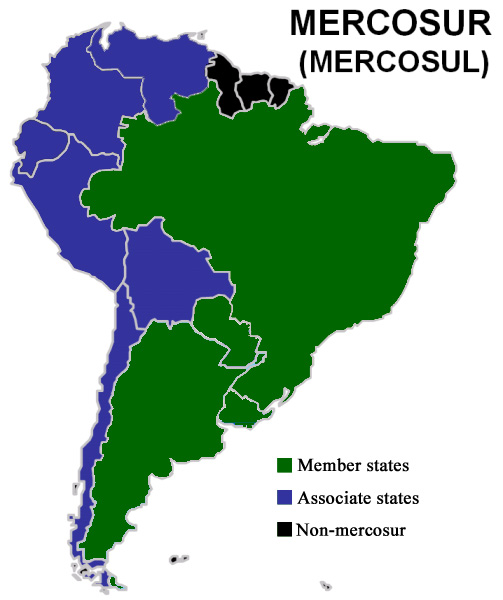 The EU has recently signed two trade deals after many years of negotiations. The first is with Mercosur, the South American trading and economic co-operation organisation, currently consisting of Brazil, Argentina, Uruguay and Paraguay – a region of over 260m people. The second is with Vietnam, which should result in tariff reductions of 99% of traded goods. This is the first deal of its kind with a developing country in Asia. These deals follow a recent landmark deal with Japan.
The EU has recently signed two trade deals after many years of negotiations. The first is with Mercosur, the South American trading and economic co-operation organisation, currently consisting of Brazil, Argentina, Uruguay and Paraguay – a region of over 260m people. The second is with Vietnam, which should result in tariff reductions of 99% of traded goods. This is the first deal of its kind with a developing country in Asia. These deals follow a recent landmark deal with Japan.
At a time when protectionism is on the rise, with the USA involved in trade disputes with a number of countries, such as China and the EU, deals to cut tariffs and other trade restrictions are seen as a positive development by those arguing that freer trade results in a net gain to the participants. The law of comparative advantage suggests that trade allows countries to consume beyond their production possibility curves. What is more, the competition experienced through increased trade can lead to greater efficiency and product development.
It is estimated that the deal with Mercosur could result in a saving of some €4bn per annum in tariffs on EU exports.
 But although there is a net economic gain from greater trade, some sectors will lose as consumers switch to cheaper imports. Thus the agricultural sector in many parts of the EU is worried about cheaper food imports from South America. What is more, increased trade could have detrimental environmental impacts. For example, greater imports of beef from Brazil into the EU could result in more Amazonian forest being cut down to graze cattle.
But although there is a net economic gain from greater trade, some sectors will lose as consumers switch to cheaper imports. Thus the agricultural sector in many parts of the EU is worried about cheaper food imports from South America. What is more, increased trade could have detrimental environmental impacts. For example, greater imports of beef from Brazil into the EU could result in more Amazonian forest being cut down to graze cattle.
But provided environmental externalities are internalised within trade deals and provided economies are given time to adjust to changing demand patterns, such large-scale trade deals can be of significant benefit to the participants. In the case of the EU–Mercosur agreement, according to the EU Reporter article, it:
…upholds the highest standards of food safety and consumer protection, as well as the precautionary principle for food safety and environmental rules and contains specific commitments on labour rights and environmental protection, including the implementation of the Paris climate agreement and related enforcement rules.
The size of the EU market and its economic power puts it in a strong position to get the best trade deals for its member states. As EU Trade Commissioner, Cecilia Malmström stated:
Over the past few years the EU has consolidated its position as the global leader in open and sustainable trade. Agreements with 15 countries have entered into force since 2014, notably with Canada and Japan. This agreement adds four more countries to our impressive roster of trade allies.
Outside the EU, the UK will have less power to negotiate similar deals.
Articles
Questions
- Draw a diagram to illustrate the gains for a previously closed economy from engaging in trade by specialising in products in which it has a comparative advantage.
- Distinguish between trade creation and trade diversion from a trade deal with another country or group of countries.
- Which sectors in the EU and which sectors in the Mercosur countries and Vietnam are likely to benefit the most from the respective trade deals?
- Which sectors in the EU and which sectors in the Mercosur countries and Vietnam are likely to lose from the respective trade deals?
- Are the EU–Mercosur and the EU–Vietnam trade deals likely to lead to net trade creation or net trade diversion?
- What are the potential environmental dangers from a trade deal between the EU and Mercosur? To what extent have these dangers been addressed in the recent draft agreement?
- Will the UK benefit from the EU’s trade deals with Mercosur and Vietnam?
 In the light of the Brexit vote and the government’s position that the UK will leave the single market and customs union, there has been much discussion of the need for the UK to achieve trade deals. Indeed, a UK-US trade deal was one of the key issues on Theresa May’s agenda when she met Donald Trump just a week after his inauguration.
In the light of the Brexit vote and the government’s position that the UK will leave the single market and customs union, there has been much discussion of the need for the UK to achieve trade deals. Indeed, a UK-US trade deal was one of the key issues on Theresa May’s agenda when she met Donald Trump just a week after his inauguration.
But what forms can a trade deal take? What does achieving one entail? What are likely to be the various effects on different industries – who will be the winners and losers? And what role does comparative advantage play? The articles below examine these questions.
Given that up until Brexit, the UK already has free trade with the rest of the EU, there is a lot to lose if barriers are erected when the UK leaves. In the meantime, it is vital to start negotiating new trade deals, a process that can be extremely difficult and time-consuming.
A far as new trade arrangements with the EU are concerned, these cannot be agreed until after the UK leaves the EU, in approximately two years’ time, although the government is keen that preliminary discussions take place as soon as Article 50 is triggered, which the government plans to do by the end of March.
Articles
Trade deals are difficult to negotiate and Britain lacks the skills for the job The Conversation, Nigel Driffield (27/1/17)
Why a U.S.-U.K. Trade Deal Could be Harder than it Sounds Newsweek, Josh Lowe (26/1/17)
UK-US trade deal will have ‘very small upsides’ for Britain, says former Bank of England economist Independent, Rob Merrick (26/1/17)
Trump says he wants a U.K. trade deal. Don’t hold your breath CNN Money, Alanna Petroff (23/1/16)
Reality Check: Can there be a quick UK-USA trade deal? BBC News, Jonty Bloom (16/1/17)
Questions
- What elements would be included in a UK-US trade deal?
- Explain the gains from trade that can result from exploiting comparative advantage.
- Explain the statement in the article that allowing trade to be determined by comparative advantage is ‘often politically unacceptable, as governments generally look to protect jobs and tax revenues, as well as to protect activities that fund innovation’.
- Why is it difficult to work out in advance the likely effects on trade of a trade deal?
- What would be the benefits and costs to the UK of allowing all countries’ imports into the UK tariff free?
- What are meant by ‘trade creation’ and ‘trade diversion’? What determines the extent to which a trade deal will result in trade creation or trade diversion?
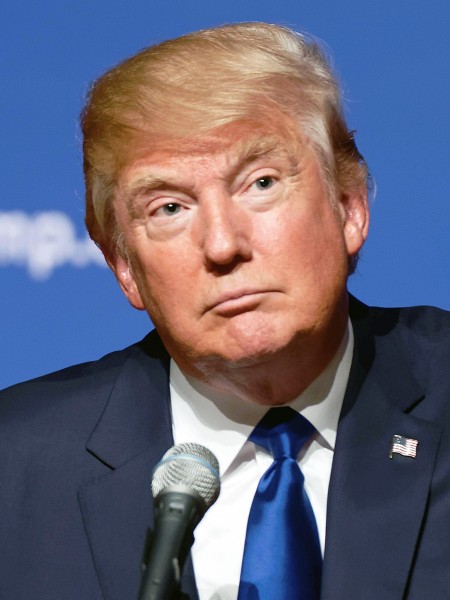 President-elect Donald Trump has blamed free trade for much of America’s economic problems. He argues that cheap imports from China, partly from an undervalued yuan, have led to a loss of jobs and to large-scale income flows from the USA to China. “They have taken our jobs; they have taken our money; and on top of that they have loaned the money to us and we actually pay them interest now on money,” he claimed to The Economist.
President-elect Donald Trump has blamed free trade for much of America’s economic problems. He argues that cheap imports from China, partly from an undervalued yuan, have led to a loss of jobs and to large-scale income flows from the USA to China. “They have taken our jobs; they have taken our money; and on top of that they have loaned the money to us and we actually pay them interest now on money,” he claimed to The Economist.
And it’s not just trade with China that he criticises. He sees cheap imports from developing countries generally as undermining US jobs. The solution he advocates is the imposition of tariffs on imports that threaten US jobs and scrapping, or fundamentally renegotiating, trade deals.
He refers to NAFTA – the North American Free Trade Agreement with Canada and Mexico – as the worst trade deal in US history and blames it for the loss of thousands of US manufacturing jobs. He has said that he will demand better terms from Mexico and Canada. If they don’t agree to them, he’d pull the USA out of NAFTA altogether.
A more recent trade agreement is the Trans-Pacific Partnership (TPP) with 11 other Pacific rim countries (but not including China). The agreement was signed on 4 February 2016, but is awaiting ratification from member countries. Amongst other things, the agreement cuts over 18,000 tariffs. Donald Trump has said that he would block the deal, even though it would lead to the elimination of tariffs on most US manufactured and agricultural products exported to the other countries. He argues that it would lead to a large-scale loss of US jobs from cheap imports.
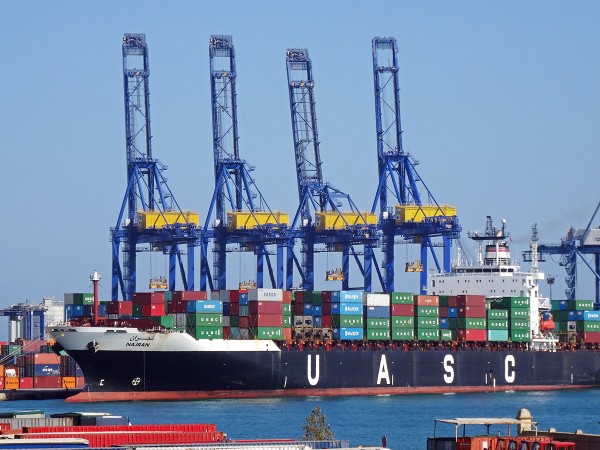 Another major trade deal criticised by Trump is that being negotiated between the USA and the EU – the Transatlantic Trade and Investment Partnership (TTIP). It has already faced fierce opposition in Europe, with many fearing that it would give too much power to US corporations in their operations in Europe. With the opposition from Trump, it looks unlikely that the agreement will be signed, even in an amended form.
Another major trade deal criticised by Trump is that being negotiated between the USA and the EU – the Transatlantic Trade and Investment Partnership (TTIP). It has already faced fierce opposition in Europe, with many fearing that it would give too much power to US corporations in their operations in Europe. With the opposition from Trump, it looks unlikely that the agreement will be signed, even in an amended form.
So is this more protectionist stance by Donald Trump in America’s interests? The main argument against restricting imports is that people generally in the USA would be poorer. This is the prediction from the law of comparative advantage. Trade allows a country to consume beyond its production possibility curve by specialising in the production of goods with relatively low opportunity costs and importing goods which would have had a higher opportunity cost if they were produced domestically (see, for example, Economics, 9th edition, pages 711–4). By imposing tariffs or other restrictions on cheap imports, consumers would end up paying more for such goods if they now have to be produced domestically. Cheap Chinese t-shirts would be replaced by expensive US ones. Real US incomes would be lower.
Another danger of pursuing protectionist policies is that other countries might retaliate. Trade wars might result, with the world ending up poorer.
Then there is a problem of locating products. It is not a simple question of saying a product is made in the USA or elsewhere. With complex modern supply chains, many products use components and services, such as design and logistics, from many different countries. Imposing restrictions on imports may lead to damage to products which are seen as US products.
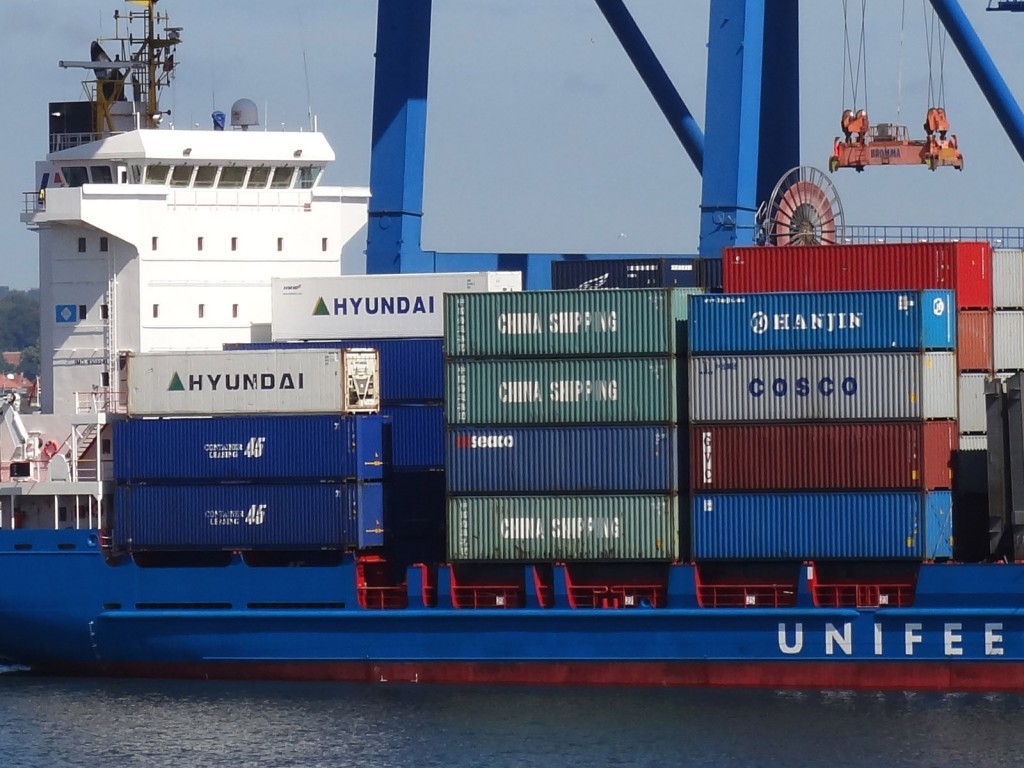 An open trade policy, by contrast, not only leads to higher consumption, it stimulates economic growth and the extra competition it creates improves domestic productivity. As the pro-free trade article by Graeme Leach, linked below, argues:
An open trade policy, by contrast, not only leads to higher consumption, it stimulates economic growth and the extra competition it creates improves domestic productivity. As the pro-free trade article by Graeme Leach, linked below, argues:
There is overwhelming evidence that free trade improves economic performance by increasing competition in the domestic market. Trade disciplines domestic firms with market power, and simultaneously promotes productivity growth. Research also shows that a 10 per cent increase in trade leads to a 5 per cent increase in per capita income. More open trade policies are associated with higher per capita incomes.
And as the article by Clark Packard argues:
There is no question that America’s middle and lower classes have benefited from our trade liberalization. Through the widely accepted principle of comparative advantage in our trade policies, productivity has surged and prices have declined. Lower prices save the average American family thousands of dollars a year on goods they consume, raising the standard of living through enhanced purchasing power.
Despite these arguments, there is one crucial problem with free trade. Although overall levels of consumption may be higher, trade may make some people poorer. If workers in the US steel or garment industries lose their jobs because of cheap imports, they will certainly feel worse off, especially if there is no prospect of them getting another job elsewhere. They may lack transferable skills or have too many family or personal ties to move elsewhere in the country.
The government could help to ameliorate the problems of those made unemployed by providing retraining or resettlement grants or by investing in infrastructure projects that require relatively low skilled, but local, construction workers. But, as the Forbes article states:
It is in helping displaced workers of all types that US government, as well as the leaders of other rich countries, have largely failed. Little has been done to assist laid-off workers whose industries simply cannot compete in developed countries anymore.
What is more, inequality has been growing in the USA, and in most other developed countries too.  International trade and investment and the growing concentration of power in large corporations has meant that most of the gains from trade have gone to the richest people. Many of the poor blame trade for their plight and the argument that they have still made some gains is either not believed or is not enough to appease them.
International trade and investment and the growing concentration of power in large corporations has meant that most of the gains from trade have gone to the richest people. Many of the poor blame trade for their plight and the argument that they have still made some gains is either not believed or is not enough to appease them.
An interesting insight into why people may have voted for Trump and his policy of protectionism is provided by the Ultimatum Game (see also). As the final article below explains:
The game itself involves two players. The first player receives a sum of money, and gets to propose how to divide it between the two players. The second player can do only one thing: accept or reject the proposal. If the second player accepts, then the money is divided between the two players as proposed. But if the second player rejects the proposal, then neither player gets anything.
It might seem that the rational thing for the second person to do is to accept whatever the first person proposes, however little it gives to the second person providing it is something – after all, even a little is better than nothing. But experiments show that people playing the second person do not behave in that way. They seek a fair distribution. If the proposed distribution is perceived as unfair, they would prefer to reject the proposal, with both players getting nothing.
This may help to explain the psychology of poor blue-collar workers. They would rather punish the rich a lot, and possibly themselves a little, than let the rich continue getting richer while they are stuck on low wages with little prospect for improvement. But, of course, they may also believe Trump’s rhetoric that they will indeed be better off from protectionist policies that help save their jobs.

What precisely Donald Trump will do about trade agreements and protection, we will have to wait and see. Often what is pledged in an election campaign is not carried out in office or is substantially watered down.
Articles
How Donald Trump thinks about trade The Economist (9/11/16)
What President Trump’s victory means for the most important trade deal in the world Independent, James Moore (9/11/16)
Trump and trade: A radical agenda? BBC News, Ben Morris (9/11/16)
Trump could change trade stance, says former Bush adviser BBC News, Tom Espiner (11/11/16)
3 Ways President-Elect Trump May Shake Up Trade Policy NPR, Marilyn Geewax (9/11/16)
Donald Trump Win to Upend Trade Policy Nasdaq, William Mauldin and John Lyons (9/11/16)
Stiglitz Grades Donald Trump an F on Economics Bloomberg, Enda Curran and Angie Lau (19/9/16)
Trump can kill trade deals but he can’t kill globalisation The Conversation, Remy Davison (10/11/16)
Anti-free trader Donald Trump is on a collision course with economic reality City A.M., Graeme Leach (9/11/16)
What Trump And Clinton Both Get Wrong On Trade Forbes, Simon Constable (4/11/16)
The Rabble Understands Trade Pretty Well Huffington Post, Brad Miller (4/11/16)
Contrary to Donald Trump’s claims, free trade benefits the poorest Americans U.S.News, Clark Packard (27/10/16)
The Meaning of Open Trade and Open Borders The New Yorker, Bernard Avishai (17/10/16)
We just saw what voters do when they feel screwed. Here’s the economic theory of why they do it. Quartz, James Allworth (9/11/16)
Questions
- Use a simple two-product production possibility diagram to demonstrate the possible consumption gains to a country from trading with another country and specialising in exporting the good in which it has a comparative advantage.
- Search Donald Trump’s speeches to identify statements he has made about the trade policies he will pursue as president.
- Explain why some people may gain more from free trade than others. Why do the people who have gained the most tend to be the richest people?
- What are the arguments for and against the free movement of labour (a) within countries; (b) between countries?
- Compare the relative benefits and costs of tariffs and various forms of administrative constraints on trade.
- If the second player in the ultimatum game rejects an ‘unfair’ offer, should this behaviour be described as ‘irrational? Explain.
- Find out the details of the Trans-Pacific Partnership agreement. In what ways, other than through increased trade, would the agreement benefit the residents of the member countries?
- Does free trade threaten employment in the long term? Explain.
 According to the law of comparative advantage, trade can benefit all countries if they export goods which they can produce at lower opportunity costs than their trading partners. Trade enables all countries to consume beyond their production possibility frontier. What is more, trade can increase competition, which encourages firms to be more efficient.
According to the law of comparative advantage, trade can benefit all countries if they export goods which they can produce at lower opportunity costs than their trading partners. Trade enables all countries to consume beyond their production possibility frontier. What is more, trade can increase competition, which encourages firms to be more efficient.
That trade is beneficial has been generally accepted by governments around the world since the Second World War, with the General Agreement on Tariffs and Trade (GATT) and then the World Trade Organization (WTO) advocating the dismantling of trade barriers. Countries have participated in a series of trade ’rounds’, such as the Uruguay Round (1986–94) and most recently the Doha Round (2001–15). But since the financial crisis of 2008, there has been waning enthusiasm for freer trade and growing calls to protect strategic and/or vulnerable industries. To some extent this mirrors the growth in protection after the Great Depression of the early 1930s as countries sought to boost their own industries.
After some progress in the Doha round talks in Nairobi in December 2015, the talks effectively marked the end of a fourteen-year road for the round (see also). There was a failure to agree on a number of items and chances of resurrecting the talks seem slim.
 The classic response to calls for protection is that it can lead to a trade war, with a net loss in global output as less efficient domestic industries are shielded from competition from lower-cost imports. Consumers lose from no longer having access to cheaper imported goods. Trade wars, it is argued, are a negative sum game. Any gains to one country are more than offset by losses elsewhere. In fact, it is likely that all countries will lose.
The classic response to calls for protection is that it can lead to a trade war, with a net loss in global output as less efficient domestic industries are shielded from competition from lower-cost imports. Consumers lose from no longer having access to cheaper imported goods. Trade wars, it is argued, are a negative sum game. Any gains to one country are more than offset by losses elsewhere. In fact, it is likely that all countries will lose.
One argument for protection recognises the efficiency gains from free trade, but argues that current trade is distorted. For example, countries may subsidise the export of products in which they have a comparative disadvantage and dump them on the rest of the world. The WTO recognises this as a legitimate argument for tariffs, if they are used to offset the effect of the subsidies and make import prices more reflective of the cost of production.
But increasingly arguments go beyond this. Industries that are regarded as strategic to a country’s future, such as the steel industry or agriculture, are seen as warranting protection. With protection, investment may flow to such industries, making them more efficient and even gaining a comparative advantage at some point in the future.
Then there is the question of income distribution. Trade with poor countries may help to close the gap somewhat between rich and poor countries. The reason is that poor countries, with an abundance of labour, are likely to have a comparative advantage in labour-intensive products. The demand for exports of such products will help to drive up wages in such countries. However, income distribution within the rich countries may become less equal. Cheap imports from developing countries may depress the wages of unskilled or low-skilled workers in the rich countries.
Another argument concerns the devastation caused to communities by the closure of plants which are major employers. Workers made redundant may find it hard to find alternative employment, especially if their skills are specific to the plant that has closed. At least in the short term, it is argued that such industries warrant protection to allow time for alternative employers to be attracted into the area.
Arguments such as these are being used today in many countries as they struggle with slowing growth in China, a glut of global resources and overcapacity in certain industries.
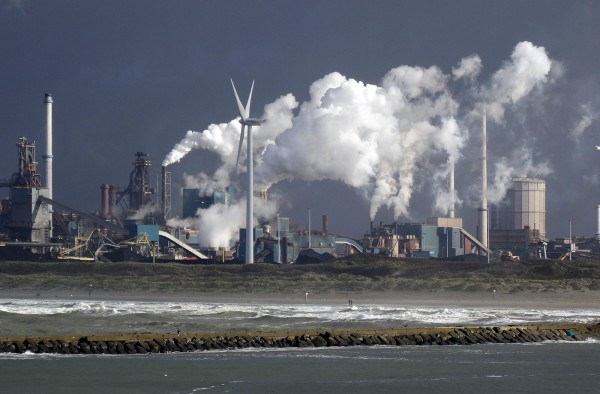 The steel industry is a case in point. The announcement by Tata Steel that it intends to close the Port Talbot steel works has been met with consternation and calls for protection against subsidised Chinese steel imports. The USA already imposes tariffs of 256% on corrosion-resistant Chinese steel. The EU has proposed raising tariffs on Chinese steel to the full amount of the subsidy, but the UK has blocked this, not wishing to trigger a trade war with China. In the meantime, China has announced the imposition of a tariff of 46% on a particular type of hi-tech steel imported from the EU.
The steel industry is a case in point. The announcement by Tata Steel that it intends to close the Port Talbot steel works has been met with consternation and calls for protection against subsidised Chinese steel imports. The USA already imposes tariffs of 256% on corrosion-resistant Chinese steel. The EU has proposed raising tariffs on Chinese steel to the full amount of the subsidy, but the UK has blocked this, not wishing to trigger a trade war with China. In the meantime, China has announced the imposition of a tariff of 46% on a particular type of hi-tech steel imported from the EU.
On the other side of the Atlantic, there have been growing protectionist calls from presidential front runners. Donald Trump and Ted Cruz on the Republican side, and Bernie Sanders and now Hilary Clinton on the Democratic side, are opposed to the trade agreement that President Obama has been seeking with the EU – the Transatlantic Trade and Investment Partnership (TTIP). Donald Trump has proposed imposing tariffs of 45% on all Chinese imports.

The following articles look at the growing calls for protection, especially against China, and at the arguments about what should be done to protect the UK and EU steel industry.
Articles
Defiant China slaps steel tariffs on Britain as trade war looms The Telegraph, Ambrose Evans-Pritchard (1/4/16)
China’s soaring steel exports may presage a trade war, The Economist (9/12/15)
Trade, at what price? The Economist (30/3/16)
Free trade in America: Open argument The Economist (2/4/16)
Can the British steel industry be saved? Financial Times (2/4/16)
Steel crisis: UK government plays down China tariff fears BBC News (2/4/16)
The dogmas destroying UK steel also inhibit future economic growth The Observer, WIll Hutton (3/4/16)
UK accused of leading efforts to block limits to Chinese steel dumping The Guardian, Frances Perraudin (1/4/16)
There’s always an excuse to justify suspending free trade – Tata is the latest The Telegraph, Allister Heath (1/4/16)
Can one of the world’s top economies live without making steel? Bloomberg, Thomas Biesheuvel (1/4/16)
Trade policy is no longer just for political nerds: it matters in the UK and US The Guardian, Larry Elliott (27/3/16)
Steel shrivels while Britain’s balance of payments crisis grows The Observer, WIlliam Keegan (3/4/16)
Trump’s tariff plan could boomerang, spark trade wars with China, Mexico Reuters, David Lawder and Roberta Rampton (24/3/16)
Analysis: A Trump trade war could cost the U.S. millions of jobs Daily Herald (Chicago), Jim Tankersley (3/4/16)
Questions
- What is meant by the ‘law of comparative advantage’? Does the law imply that countries will always gain from totally free trade?
- Demonstrate the gains for each of two countries which choose to trade with each other (see, for example, pages 711–3 in Economics, 9th edition).
- What is meant by ‘strategic trade theory’? How would such theory relate to the case of steel production in south Wales?
- What are the arguments for and against the EU imposing tariffs on Chinese steel imports equal to the subsidy given by the Chinese government?
- Is protectionism always a negative sum game? Explain.
- Assess the validity of various arguments for protection.
- Why did it prove impossible to complete the Doha round?
- What is meant by the ‘Transatlantic Trade and Investment Partnership (TTIP)’? Why is there so much opposition to it?
- Are bilateral trade deals, such as the TTIP, the best way of moving forward in reaping the gains from freer trade?
 As we saw in the blog post Down down deeper and down, or a new Status Quo?, for many countries there is now a negative rate of interest on bank deposits in the central bank. In other words, banks are being charged to keep liquidity in central banks. Indeed, in some countries the central bank even provides liquidity to banks at negative rates. In other words, banks are paid to borrow!
As we saw in the blog post Down down deeper and down, or a new Status Quo?, for many countries there is now a negative rate of interest on bank deposits in the central bank. In other words, banks are being charged to keep liquidity in central banks. Indeed, in some countries the central bank even provides liquidity to banks at negative rates. In other words, banks are paid to borrow!
But, by definition, holding cash (in a safe or under the mattress) pays a zero interest rate. So why would people save in a bank at negative interest rates if they could get a zero rate simply by holding cash? And why would banks not borrow money from the central bank, if borrowing rates are negative, hold it as cash and earn the interest from the central bank?
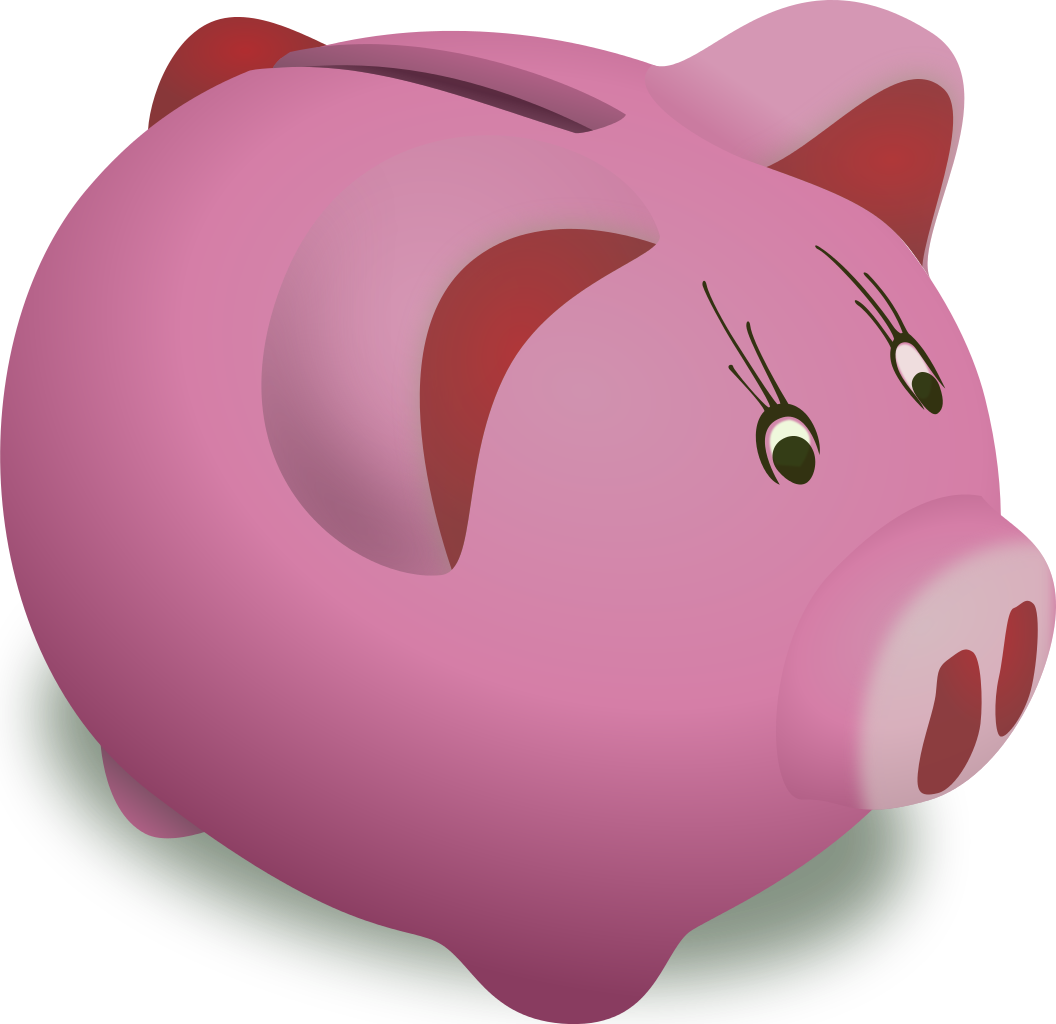 These questions are addressed in the article below from The Economist. It argues that to swap reserves for cash is costly to banks and that this cost is likely to exceed the interest they have to pay. In other words, there is not a zero bound to central bank interest rates, either for deposits or for the provision of liquidity; and this reflects rational behaviour.
These questions are addressed in the article below from The Economist. It argues that to swap reserves for cash is costly to banks and that this cost is likely to exceed the interest they have to pay. In other words, there is not a zero bound to central bank interest rates, either for deposits or for the provision of liquidity; and this reflects rational behaviour.
But does the same apply to individuals? Would it not be rational for banks to charge customers to deposit money (a negative interest rate)? Indeed, there is already a form of negative interest rate on many current accounts; i.e. the monthly or annual charge to keep the account open. But would it also make sense for banks to offer negative interest rates on loans? In other words, would it ever make sense for banks to pay people to borrow?
Read the folowing article and then try answering the questions.
Article
Bankers v mattresses The Economist (28/11.15)
Central bank repo rates/base rates
Central banks – summary of current interest rates global-rates.com
Worldwide Central Bank Rates CentralBankRates
Questions
- What is a central bank’s ‘repo rate’. Is it the same as (a) its overnight lending rate; (b) its discount rate?
- Why are the Swedish and Swiss central banks charging negative interest rates when lending money to banks?
- What effect are such negative rates likely to have on (a) banks’ cash holdings; (b) banks’ lending to customers?
- Why are many central banks (including the ECB) charging banks to deposit money with them? Why do banks continue to make such deposits when interest rates are negative?
- Would banks ever lend to customers at negative rates of interest? Explain why or why not.
- Would banks ever offer negative rates of interest on savings accounts? Explain why or why not.
- How do expectations about exchange rate movements affect banks willingness to hold deposits with the central bank?
- What are the arguments for and against abolishing cash altogether?
 The EU has recently signed two trade deals after many years of negotiations. The first is with Mercosur, the South American trading and economic co-operation organisation, currently consisting of Brazil, Argentina, Uruguay and Paraguay – a region of over 260m people. The second is with Vietnam, which should result in tariff reductions of 99% of traded goods. This is the first deal of its kind with a developing country in Asia. These deals follow a recent landmark deal with Japan.
The EU has recently signed two trade deals after many years of negotiations. The first is with Mercosur, the South American trading and economic co-operation organisation, currently consisting of Brazil, Argentina, Uruguay and Paraguay – a region of over 260m people. The second is with Vietnam, which should result in tariff reductions of 99% of traded goods. This is the first deal of its kind with a developing country in Asia. These deals follow a recent landmark deal with Japan. But although there is a net economic gain from greater trade, some sectors will lose as consumers switch to cheaper imports. Thus the agricultural sector in many parts of the EU is worried about cheaper food imports from South America. What is more, increased trade could have detrimental environmental impacts. For example, greater imports of beef from Brazil into the EU could result in more Amazonian forest being cut down to graze cattle.
But although there is a net economic gain from greater trade, some sectors will lose as consumers switch to cheaper imports. Thus the agricultural sector in many parts of the EU is worried about cheaper food imports from South America. What is more, increased trade could have detrimental environmental impacts. For example, greater imports of beef from Brazil into the EU could result in more Amazonian forest being cut down to graze cattle.







